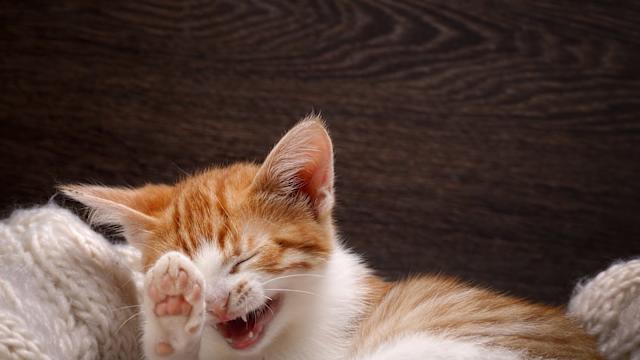
A Life Defined by a Number
For nearly 13 long years, one gentle orange tabby cat had known only the cold, clinical walls of a research laboratory. She had never curled up on a soft blanket in a warm living room, never felt the sunlight streaming through a home window, and never once had anyone call her by a name. Instead, she was simply #11-245 — a number permanently tattooed inside her ears, a symbol of her identity being reduced to a statistic.
This was the reality for countless animals used in experiments, but for #11-245, fate had something different in store. After years of campaigning, White Coat Waste, an advocacy group dedicated to ending taxpayer-funded animal testing, succeeded in shutting down a controversial kitten testing lab at the University of California, Davis. With the closure came a bittersweet task: finding homes for the cats who had spent most — if not all — of their lives behind bars.
Among those determined to give these survivors a second chance was Anthony Bellotti, the organization’s founder. He had previously welcomed another rescued lab cat, Petite, into his family, but after she passed away, his heart longed to give love to another. “You don’t choose the cat — they choose you,” Bellotti reflected, and that truth would soon prove itself.
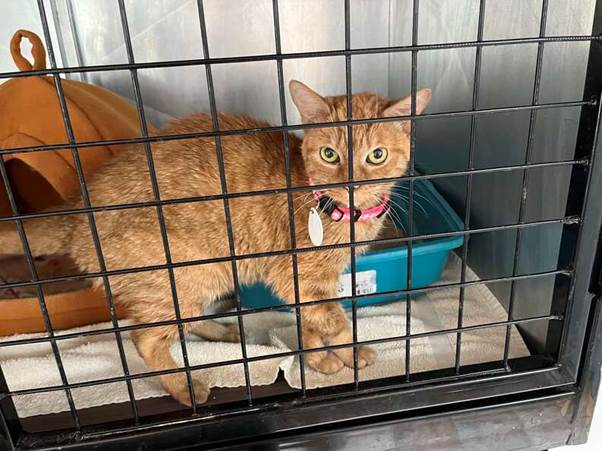
Meeting the Cat Who Chose Him
When Bellotti walked into the rescue center to meet the lab survivors, he was immediately surrounded by curious yet cautious eyes. Many of the cats, having lived in confinement for years, were hesitant about human touch. Still, one in particular stood out.
There she was — a fragile, underweight tabby with fur the soft hue of golden petals. She was nervous, refusing food, and trembling in her cage. Her spirit seemed nearly extinguished, yet her eyes spoke volumes. The moment Bellotti looked into them, he felt something click. She wasn’t just another rescue — she was his cat.
But first, he gave her something she had never once received in her entire life: a name. Inspired by her color, he lovingly chose “Marigold.”
“It was the simplest act, but also the most important,” he said. “She was no longer a number. She was Marigold — unique, loved, and finally recognized as the individual she always was.”
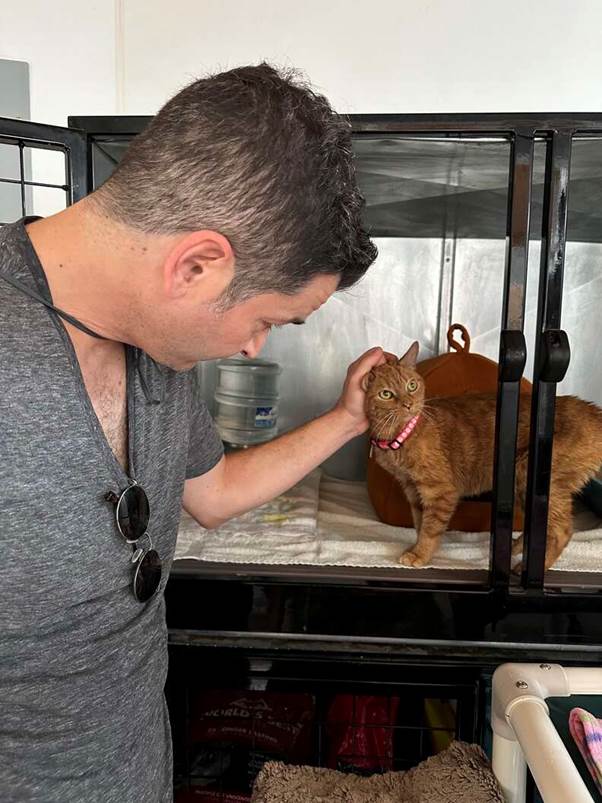
Discovering Life Beyond the Lab
The early days of Marigold’s transition weren’t easy. After a lifetime of sterile cages and minimal human affection, the concept of “home” was entirely foreign to her. Every sound startled her, every new sensation required adjustment. For weeks, she would quietly observe her surroundings, cautiously dipping her paws into a world she had never known existed.
But slowly — and beautifully — Marigold began to transform.
She started eating again, regaining weight until her once bony frame filled out with health. She discovered the joy of soft blankets, the comfort of naps in sunny windowsills, and the thrill of chasing toys across the floor. Her once-quiet demeanor gave way to a more playful, confident personality.
By the time her 13th birthday rolled around, Marigold wasn’t just surviving — she was thriving. Bellotti and his family celebrated with a small birthday party complete with her very first KitNipBox, filled with toys and treats. Watching her bat around toy mice and roll in catnip was nothing short of magical. It was a birthday that symbolized so much more than age; it marked her first year of true freedom.
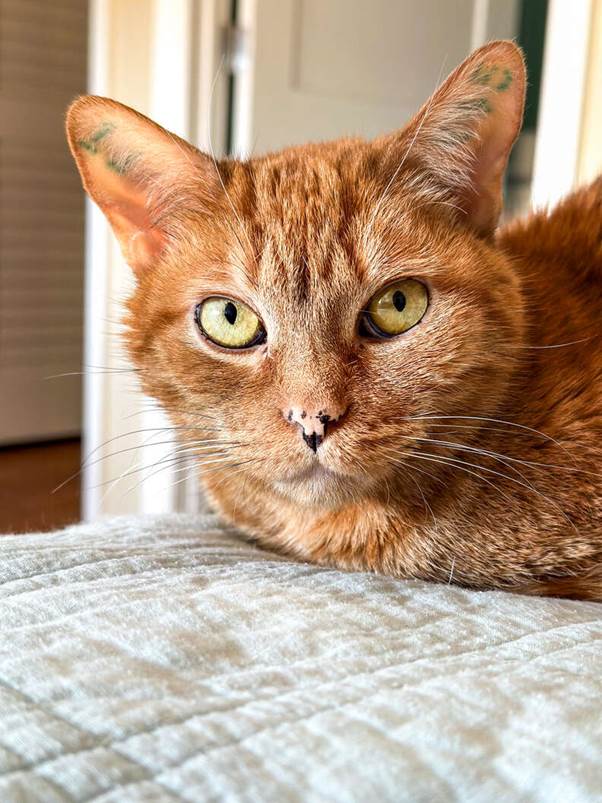
A New Beginning, A Forever Family
Today, Marigold spends her days doing all the things most cats take for granted — but for her, each moment is precious. She kneads biscuits on cozy blankets, begs for treats with playful persistence, and soaks up love from her new family, who dote on her endlessly.
“She’s become food-obsessed in the funniest way,” Bellotti shared with a laugh. “It’s as if she’s making up for all the meals she never enjoyed before. She’s healthy now, and every day she surprises us with her growing confidence.”
Perhaps the most touching part of her journey is how quickly she has embraced the concept of belonging. After more than a decade of isolation, Marigold has blossomed into a cat who not only responds to her name but thrives in the warmth of companionship.
Her story is a reminder of the resilience of animals and the transformative power of love. Where once there was only #11-245 — a forgotten number etched into her ears — now there is Marigold, a beloved family member with a name, a personality, and a forever home.
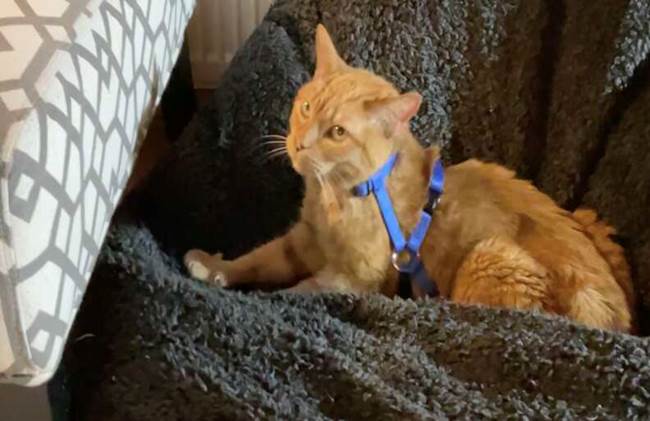
The Bigger Picture: Why Marigold’s Story Matters
While Marigold’s happy ending is cause for celebration, her journey also shines a light on a larger issue: the plight of countless animals still trapped in laboratories across the world. Each of them is more than a number, more than a subject — they are living beings with the capacity to love, fear, and hope.
Anthony Bellotti’s commitment to not only shutting down labs but also adopting the very animals who endured them is a powerful example of compassion in action. His decision to name Marigold wasn’t just sentimental — it was symbolic. It showed that every animal deserves to be seen as an individual, not as an expendable tool for research.
Marigold’s story may have started in heartbreak, but it blossomed into hope. Today, she no longer carries the weight of being just a number. Instead, she represents resilience, healing, and the promise that every animal deserves a chance at life outside the confines of cages.
And perhaps the most beautiful part? Marigold will never again know a world of cold labs or numbered tags. For the rest of her days, she will only know love, comfort, and the joy of finally being free.

